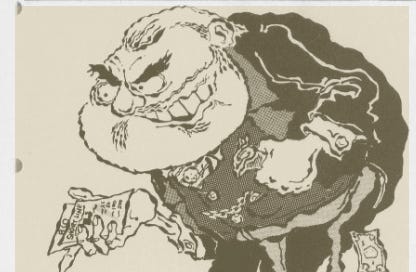This is Throwbacks, a newsletter by me, Michael Weinreb, about sports, history, culture and politics, and everything in-between.
If you like what you read, please click the button below, join the mailing list for FREE and please share, on social media or through e-mail or however you feel comfortable sharing.
And if you’ve been reading for a while, please consider a paid subscription to help keep this thing going—you’ll also get full access to the historical archive of over 200 articles. (Click here and you’ll get 20 percent off either a monthly or annual subscription for the first year. And if your subscription is up for renewal, just shoot me an email and I’ll figure out a way to get you that discount, as well.)
I.
In December of 1975, amid the apex of America’s post-Watergate cynicism, the student body at Stanford University voted to change the school’s mascot. Stanford’s sports teams had been known as the Indians until 1972, when the administration decided the nickname was derogatory and changed it to Cardinals1; the vote of 2770 students rejected reinstating both the Indians and the Cardinals name, as well as alternatives like Sequioas and Trees, in favor of a more pointed replacement: The Robber Barons.
This nickname was a nod to Leland Stanford, the 19th-century railroad mogul-turned-philanthropist who founded Stanford as a tribute to his late son after a career of fleecing the public. Robber barons, in that era, were a small group of businessmen who were regarded by muckraking journalists—and eventually, by much of America—as wealthy, powerful and unethical businessmen who exploited the masses in order to get rich. While amassing staggering wealth, according to biographer Roland De Wolk, Stanford not only refused to pay back the loans he’d taken from American taxpayers—he argued, in fact, that those taxpayers actually owed him more money. Stanford used his power to get elected governor, formed a monopoly with his railroad partners, and bought off investigators who tried to investigate his company.
Roughly a century later, after the student vote, the school newspaper, The Stanford Daily, alternated between the nicknames Robber Barons and Cardinals in its articles. The whole thing was essentially an elaborate joke, but it was also an expression of frustration by students who felt as if they had no actual say over much of anything in a society that had led them astray. In retrospect, Robber Barons might have been the right choice, a small callback to that reprehensible era in American history where men like Leland Stanford held sway, and a reminder that we shouldn’t doom ourselves into repeating it.
II.
On Monday night in Atlanta, Ohio State defeated Notre Dame to win the national championship in a game I’d personally much rather pretend never happened at all. On a fundamental level, this was unsurprising: Ohio State had reportedly spent more money on name, image and likeness deals for their players than any other team in America. “After all that,” read a Sportico headline, “the richest school wins the college football playoff.”
Meanwhile, over the course of the long weekend, as a new president was inaugurated with a small army of tech oligarchs seated over his shoulder, the Los Angeles Dodgers signed one of the most coveted free-agent starting pitchers and one of the most coveted free-agent relief pitchers on the market. This was in addition to the Dodgers signing pretty much every single viable free agent on the market already; it makes them, I imagine, the most prohibitive favorite to win the World Series since the 1927 Yankees.
The online riposte to such free-spending in two of America’s major sports seems to be that other teams could have done the same thing—that the Dodgers have simply mastered the art of the deferred contract before any other team, and that they are winning like this because they are willing to spend more money and be more resourceful about the way they spend that money, and that other teams are simply too cheap to compete with them. This is also pretty much the same thing that others have said about Ohio State this season; that $20 million was essentially a bargain in order to buy a title.
But this glosses over the fundamental problem, which is that sports are not supposed to function this way, any more than society is supposed to function this way.
The most popular sport in America, professional football, is
Keep reading with a 7-day free trial
Subscribe to Throwbacks: A Newsletter About Sports History and Culture to keep reading this post and get 7 days of free access to the full post archives.




